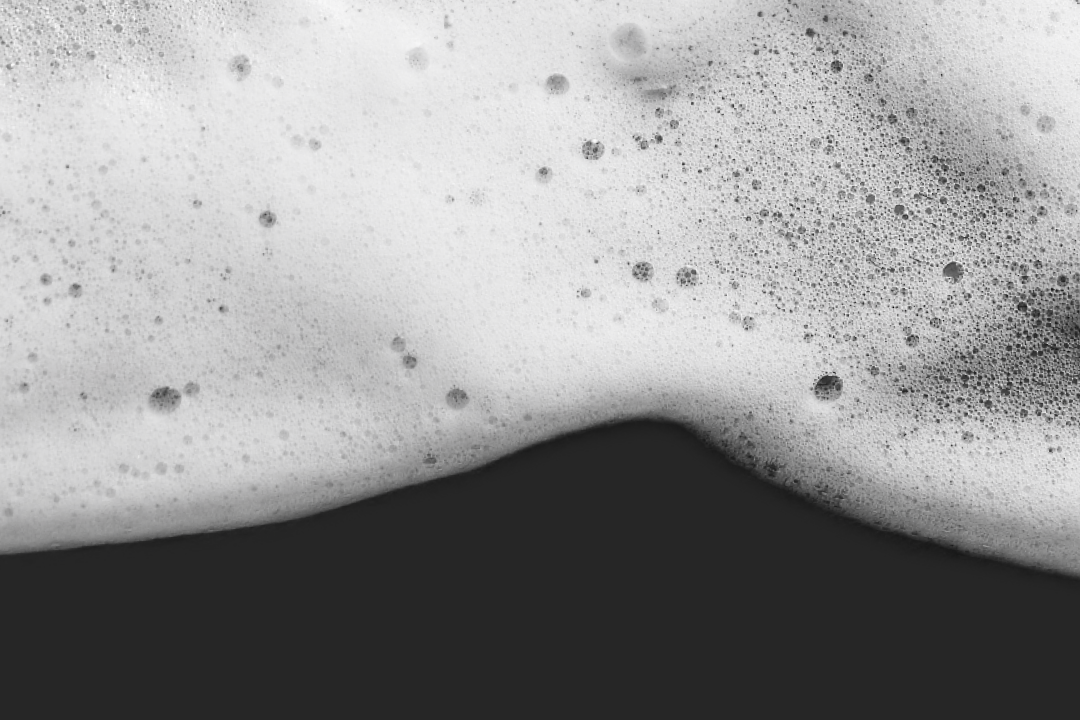Human Impact on the Environment: What You Should Know
It’s no secret that the planet is changing. As populations continue to grow and expand, our interactions with the environment change too, and we begin to have an even more immense effect on the world around us.
These changes can have direct adverse effects on wildlife, but they can also have indirect consequences on us. Allow us to explain.
Humans impact the environment on a daily basis, whether we realize it or not. So having an understanding of how we’re making an impact is essential, as this allows you to take necessary steps towards reducing your carbon footprint and enhancing the planet for generations after you (as they say, think about the children!)
Here’s everything you should know about your impact on the environment and what you can do about it.
How Have Humans Impacted the Environment?
Humans have had major impacts and implications on the environment throughout history (remember the industrial revolution?). Let’s take a look at some of the most common ways that human activity has had negative impacts on the world around us.
Overpopulation
Overpopulation is a complicated subject because it refers to a situation in which the Earth cannot generate the resources necessary for the entirety of the world’s population each year. Resources like wood, paper, water, and food are mostly finite, meaning that these resources will run out eventually.
And even if they don’t necessarily run out, they might not replenish themselves quickly enough to keep up with our growing population and demands.
Experts say that the Earth has been in a state of overpopulation since 1970, with each year becoming more damaging (and more straining to energy sources).
Don’t get us wrong; it is not anyone’s fault for having children and increasing the global population. We all have a right to be here — we just need to be considerate.
The average person consumes at a rate of over 50% above what would be considered a sustainable level.
At Bite, we’re committed to increasing our sustainability practices by eliminating single-use materials and using eco-friendly packaging on all of our products.
Greenhouse Gasses
You probably heard about the greenhouse effect in your middle school science classes. This phenomenon is when the sun’s warmth becomes trapped in the lower atmosphere because the sun’s radiation is unable to escape the atmosphere. This happens because of high concentrations of greenhouse gasses.
Greenhouse gasses essentially trap heat in and warm the planet. Carbon dioxide, methane, nitrous oxide, and water vapor are the main gasses responsible for this effect. All of these occur naturally; however, our actions and the steps we take now can have a major effect on global climate change. Believe it or not, we do have some level of power over the extent of the greenhouse effect.
Since the advent of coal-powered steam engines, human activity has increased the volume of these harmful gasses in the atmosphere. Over half of the most abundant greenhouse gasses were released in the last 40 years alone, and a large part of this comes from fossil fuel combustion and industrial processes.
So, we know it now feels like you’re taking the blame for global warming. And yes, we surely have contributed. However, we can also help stop and even reverse these detrimental effects if we start taking small steps now.
Pollution
By definition, pollution is the introduction of harmful materials to the environment. While most people think of pollution in the atmosphere caused by industrial processes, cars, public transportation, and the burning of fossil fuels, plenty of other types of pollution are harmful to the planet.
Pollution can ultimately make the planet less habitable — both to the animals around us, and to us.
Airborne pollutants can affect vulnerable populations' ability to breathe clearly, and pollution in the ocean or landfills can release harmful chemicals upon decay. These chemicals can leak into clean water sources, or they may even be consumed by animals, leading to devastating effects and loss of species.
Deforestation
The purposeful clearing of forested land is known as deforestation. The reason for deforestation in places like the Amazon is to make room for human-involved activities, like farm grazing, home building, or manufacturing purposes. It has caused grave environmental changes and has dramatically altered natural landscapes across the globe.
Deforestation can result in more carbon dioxide being released into the atmosphere because trees take CO2 from the air. Increased CO2 contributes to ozone depletion — and the ozone layer is crucial for protecting us and our planet from the sun.
As the ozone layer breaks down and CO2 builds up, more greenhouse gasses accumulate, and climate change accelerates.
More immediately, the loss of trees makes the soil more prone to erosion, which not only makes plant species more vulnerable to fires but also increases the risk of mudslides and other natural disasters.
That’s not forgetting the biodiversity loss that leads to displaced native species and potential extinction.
Overfishing
Overfishing is the process of catching too many fish at one time, making the breeding population too depleted to recover. Fishermen often catch more fish than the population actually needs, and because of this, the world’s assessed fisheries are in trouble.
Without sustainable management of marine life, ocean ecosystems can be broken. This can dilute the seafood resources for humans as a key source of protein, which can be equally harmful to human health and wellbeing.
Water Contamination
Water contamination is a form of pollution that is less visible than the kind you’d notice in the atmosphere. When it rains, water flows into waterways that lead into the oceans, lakes, or rivers. When we use too many pesticides, fertilizers, or other types of solid waste – these harmful chemicals flow with the rainwater and enter our waterways.
This can have detrimental effects on marine life, but it can also affect clean drinking water supplies for humans.
How Can We Reduce Environmental Harm?
Reducing environmental harm occurs at the individual level, as well as the state and federal levels. While you do your part in reducing waste in your own home, continue to advocate for cleaner energy at your local and state governments so that change can occur at a nationwide level.
But until then, here are some things you can start doing right now to reduce your carbon footprint and make the world a safer place for future generations.
Opt for Reusable Bags
Reusable bags are one of the easiest yet most effective changes you can make in your daily life. Not only are reusable bags sturdier and often larger than typical plastic bags, but they also do not hang around in landfills for over 20 years compared to traditional bags.
Ditch Plastic Bottles
Plastic water bottles take up to 450 years to decompose fully. Grab a reusable bottle instead, or just opt for a good old-fashioned glass. If water quality is a concern in your area, consider snagging a water filter. You’ll save money in the long run.
Reduce Water Usage
Conserving water is a lot easier than it might seem. Even though Americans use, on average, 82 gallons of water a day at home, we can cut back by 20% by installing water-efficient fixtures and appliances.
But even if you don’t have the money or time to replace your appliances, you can cut back by limiting your showers to 10 minutes or less, opting for handwashing dishes rather than using the dishwasher, and trying to do fewer loads of laundry per week. You can even get creative; try collecting rainwater outside and using that to water plants. Simple changes can go a long way.
Conserve Energy
Just like saving water, there are simple changes that you can make regarding energy consumption that can go an extremely long way. Artificial lights are an energy waster and have made a huge (negative) change to the biosphere. Flip off lights when not in the room and during the day. Use energy-efficient light bulbs and air-dry dishes and clothes.
Additionally, try to open your windows in the summer rather than running your air conditioning, and turn your refrigerator down a degree or two to save big by doing something small.
Shop Secondhand
The clothing industry is a hidden menace to the environment, as it takes a very large number of natural resources in order to create single articles of clothing. This leads to heavy amounts of pollution and energy consumption and the depletion of non-renewable resources.
By thrifting and shopping at second-hand stores, you’re saving money while also reusing clothing for good use. Since the energy that went into making these clothes has already been used, you’re not contributing to a larger carbon footprint.
Compost Food Scraps
Composting is the natural process of recycling organic matter, and you can do it right from home. You can compost almost all types of food scraps, and since food and yard waste currently make up over 30% of what we throw away, this process is highly beneficial.
Composting keeps materials out of landfills, which helps keep ecosystems in check while also preventing further greenhouse gas emissions.
Use Public Transportation
Cars are one of the largest contributors to greenhouse gas and pollution in the world. With so many cars on the road burning fossil fuels and requiring crude oil for power, it’s no wonder that public transportation is such a convenient fix.
Public transportation allows large quantities of people to travel at one time in one vehicle. This significantly cuts back on emissions. Not to mention, using public transit would decrease traffic and decrease the cost of living substantially, making it beneficial for multiple reasons.
The Bottom Line
Humans deserve to be on planet Earth, but we also need to treat it with respect. This starts by understanding our environmental impact and taking the necessary steps to slow down its aging process.
At Bite, we’re taking every precaution we can to create a waste-free world. We only use glass bottles (which are infinitely recyclable), and we pride ourselves on being able to infinitely refill our containers to reduce the human impact on the environment.
Check out our Toothpaste Bits or refillable Deodorant to get a taste of our commitment to a zero-waste revolution.
Sources:
Overpopulation: Cause and Effect | Population Media Center.
Pollution | National Geographic Society.
Overfishing: The most serious threat to our oceans | Environmental Defense Fund.


